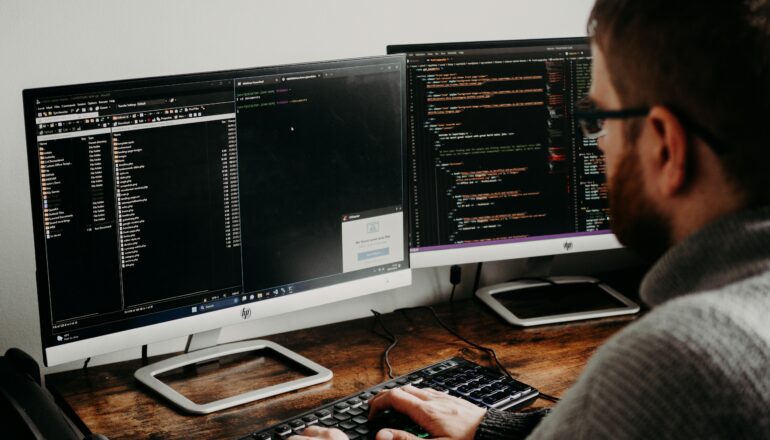Setup Your Windows System for Development

Whether you’ve just unboxed a brand-new Windows machine or you’re giving your current setup a much-needed refresh, getting your system ready for development is the first step toward productivity and performance.
From web development to backend engineering, Python scripting to DevOps automation, each type of development has its own toolkit. But there’s also a core set of configurations and software essentials that every developer — regardless of their stack — can benefit from.
In this guide, we’ll walk you through the full setup process, step by step. You’ll learn which tools to install, which settings to tweak, and how to optimize your Windows environment for a smooth, efficient, and scalable development experience.
Let’s transform your Windows system into a powerful, developer-ready machine — built for performance, flexibility, and serious coding.
First discuss about some essential tools that every developer should have
System-Independent Tools Every Developer Should Have
1. Git (The Lifeline of Version Control)
If you’re coding without Git, you’re basically skydiving without a parachute. Whether you’re pushing to GitHub, GitLab or Bitbucket Git is essential for version control, team collaboration, and saving your own skin after a late-night refactor goes wrong.
- Install: https://git-scm.com/
- Pair it with Git GUI tools like:
- GitHub Desktop (great for beginners)
- Fork (powerful and pretty)
- Sourcetree (for Atlassian fans)
2. VS Code – (The Swiss Army Knife of Editors)
Clean UI, blazing fast, insane plugin ecosystem — Visual Studio Code has rightfully become the go-to editor for pretty much every kind of dev. It works equally well for writing JavaScript, Python, Go, or even YAML files that break your CI for fun.
- Extensions to install immediately:
- Prettier (code formatter)
- GitLens (Git superpowers)
- REST Client or Thunder Client (API testing)
- Docker (if you live in containers)
3. Windows Terminal + PowerShell + WSL2 (Your Command Line Dream Team)
Stop suffering with the default CMD window. Windows Terminal brings tabs, themes, and customization. Combine that with PowerShell or WSL2 (Windows Subsystem for Linux) and you get a powerful, flexible terminal experience that actually makes working in the CLI… dare we say… enjoyable?
- Pro Tip: Use Oh My Posh for sexy prompts and fzf for fuzzy file finding magic.
4. Package Managers (Because Manual Downloads Are So 2005)
Installing apps manually? Nah. Use a CLI-based package manager instead:
- Chocolatey – Great for tools, utilities, and apps.
- Scoop – Clean, developer-focused, great for CLI tools.
- Winget – Microsoft’s native option, still improving.
They make it stupidly easy to install or update software with a single command.
bashCopyEditchoco install git vscode nodejs
5. Postman or Insomnia – API Playground
Whether you’re testing REST APIs, playing with GraphQL, or just debugging weird backend errors, tools like Postman or Insomnia are absolute must-haves. They’re system-agnostic and make your API life 1000% easier.
6. Docker – Develop in Containers, Not Chaos
It’s 2025. If you’re not using Docker, you’re probably missing out on clean environments, repeatable builds, and less “but it worked on my machine” drama. Even for local development, Docker simplifies life across the board.
- Bonus: Use Docker Compose for multi-container setups.
7. Browsers for Devs
- Brave or Firefox Developer Edition — privacy-first and dev tools ready.
- Chrome — still essential if you need full extension support and dev console familiarity.
8. File Search & Clipboard Powerups
- Everything – Instant file search. Seriously, it’s lightning-fast.
- ClipClip – Clipboard history manager. Never lose a copied snippet again.
1. Install Windows Subsystem for Linux (WSL)
👉 If you’re working with DevOps, Docker, or microservices, WSL2 is a must.
Enable WSL & Install Ubuntu
- Open PowerShell as Administrator and run:powershellCopyEdit
wsl --install - Restart your system, then open Ubuntu from the Start menu.
- Set up your username and password.
Check WSL Version
powershellCopyEditwsl -l -v
If it’s not WSL2, upgrade using:
powershellCopyEditwsl --set-version Ubuntu 2
2. Install Java & SDKMAN! (Best Way to Manage Java Versions)
If you’re a Java developer, install SDKMAN! via WSL or Git Bash.
Install Java with SDKMAN!
- Open Ubuntu (WSL) or Git Bash and run:bashCopyEdit
curl -s "https://get.sdkman.io" | bash source "$HOME/.sdkman/bin/sdkman-init.sh" - Install Java 8 & 17 (or latest LTS):bashCopyEdit
sdk install java 8.0.392-amzn sdk install java 17.0.9-tem - Verify:bashCopyEdit
java -version
3. Install IntelliJ IDEA or VS Code
🔹 IntelliJ IDEA (Best for Java & Spring Boot)
Download IntelliJ IDEA Community from JetBrains.
🔹 VS Code (For Everything Else)
Download from VS Code.
Install these extensions:
- Java Extension Pack (If using Java)
- Spring Boot Extension Pack
- Docker & Kubernetes (For DevOps)
- GitHub Copilot (For AI coding assistance)
4. Install Maven & Gradle
💡 If using SDKMAN!, just run:
bashCopyEditsdk install maven
sdk install gradle
Otherwise, install manually from:
5. Install Git & Configure SSH for GitHub
- Install Git from Git SCM.
- Set your global Git config:bashCopyEdit
git config --global user.name "Your Name" git config --global user.email "your.email@example.com" - Generate SSH keys:bashCopyEdit
ssh-keygen -t ed25519 -C "your.email@example.com" - Add the key to GitHub:bashCopyEdit
cat ~/.ssh/id_ed25519.pubCopy the output and add it to GitHub → Settings → SSH Keys.
6. Install Docker & Docker Desktop
🔹 Install Docker Desktop for Windows from Docker.
🔹 Enable WSL2 Backend in Docker Settings → General.
🔹 Test with:
bashCopyEditdocker run hello-world
7. Install Postman (For API Testing)
🔹 Download Postman from Postman Website.
8. Install Databases
🔹 MySQL
Download MySQL Community Server.
🔹 PostgreSQL
Download from PostgreSQL.
🔹 MongoDB
Download from MongoDB.
9. Install Kubernetes (For DevOps & Microservices)
🔹 Install Minikube:
bashCopyEditchoco install minikube
🔹 Install kubectl:
bashCopyEditchoco install kubernetes-cli
🔹 Start Minikube:
bashCopyEditminikube start
10. Bonus: Terminal & Productivity Tools
- Install Windows Terminal from Microsoft Store.
- Install Oh My Posh for a better PowerShell experience:powershellCopyEdit
winget install JanDeDobbeleer.OhMyPosh